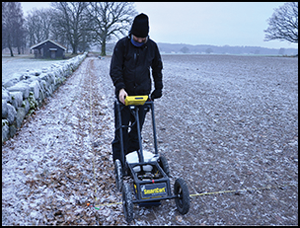Crossref Citations
This article has been cited by the following publications. This list is generated based on data provided by
Crossref.
Filzwieser, Roland
and
Eichert, Stefan
2020.
Towards an Online Database for Archaeological Landscapes. Using the Web Based, Open Source Software OpenAtlas for the Acquisition, Analysis and Dissemination of Archaeological and Historical Data on a Landscape Basis.
Heritage,
Vol. 3,
Issue. 4,
p.
1385.
Gustavsen, Lars
Gjesvold, Per Erik
Gundersen, Sigrid Mannsåker
Hinterleitner, Alois
Nau, Erich
and
Paasche, Knut
2020.
Gjellestad: a newly discovered ‘central place’ in south-east Norway.
Antiquity,
Vol. 94,
Issue. 378,
p.
1520.
Gustavsen, Lars
Stamnes, Arne Anderson
Fretheim, Silje Elisabeth
Gjerpe, Lars Erik
and
Nau, Erich
2020.
The Effectiveness of Large-Scale, High-Resolution Ground-Penetrating Radar Surveys and Trial Trenching for Archaeological Site Evaluations—A Comparative Study from Two Sites in Norway.
Remote Sensing,
Vol. 12,
Issue. 9,
p.
1408.
Lund, Julie
and
Sindbæk, Søren M.
2022.
Crossing the Maelstrom: New Departures in Viking Archaeology.
Journal of Archaeological Research,
Vol. 30,
Issue. 2,
p.
169.
Bornik, Alexander
and
Neubauer, Wolfgang
2022.
3D Visualization Techniques for Analysis and Archaeological Interpretation of GPR Data.
Remote Sensing,
Vol. 14,
Issue. 7,
p.
1709.
Filzwieser, Roland
Ruß, David
Kucera, Matthias
Doneus, Michael
Hasenhündl, Gerhard
Verhoeven, Geert J.
Zotti, Georg
Lenzhofer, Andreas
Stüttler, Gerhard
Pisz, Michał
and
Neubauer, Wolfgang
2022.
History and Archaeology in Discourse on the Dernberg–Reconstructing the Historical Landscape of a Medieval Motte-and-Bailey Castle and Deserted Village.
Heritage,
Vol. 5,
Issue. 3,
p.
2123.
Schneidhofer, Petra
Tonning, Christer
Cannell, Rebecca J. S.
Nau, Erich
Hinterleitner, Alois
Verhoeven, Geert J.
Gustavsen, Lars
Paasche, Knut
Neubauer, Wolfgang
and
Gansum, Terje
2022.
The Influence of Environmental Factors on the Quality of GPR Data: The Borre Monitoring Project.
Remote Sensing,
Vol. 14,
Issue. 14,
p.
3289.
Kershaw, Jane
2022.
Review of periodical literature for 2020: (i) 400–1100.
The Economic History Review,
Vol. 75,
Issue. 1,
p.
235.
Schneidhofer, Petra
Tonning, Christer
Cannell, Rebecca J. S.
Nau, Erich
Hinterleitner, Alois
Verhoeven, Geert J.
Gustavsen, Lars
Paasche, Knut
Neubauer, Wolfgang
and
Gansum, Terje
2023.
Advances in On- and Offshore Archaeological Prospection.
p.
377.
Piroddi, Luca
and
Rassu, Massimo
2023.
Application of GPR Prospection to Unveil Historical Stratification inside Monumental Buildings: The Case of San Leonardo de Siete Fuentes in Santu Lussurgiu, Sardinia, Italy.
Land,
Vol. 12,
Issue. 3,
p.
590.
Ryazantsev, Pavel
Tarasov, Aleksey
and
Potakhin, Maksim
2023.
Archaeological prospection of a prehistoric lithic workshop site using ground penetrating radar with a high‐frequency antenna unit.
Archaeological Prospection,
Vol. 30,
Issue. 3,
p.
341.
Stamnes, Arne Anderson
Cuenca-García, Carmen
Gustavsen, Lars
Horsley, Tim
Jónasson, Ómar Valur
Koivisto, Satu
Kristiansen, Søren Munch
Perttola, Wesa
Schneidhofer, Petra
Stott, David
Tonning, Christer
Traustadóttir, Ragnheiður
Trinks, Immo
Viberg, Andreas
and
Westergaard, Bengt
2024.
World Archaeo-Geophysics.
p.
141.
Bill, Jan
Jacobson, David
Nagel, Susanne
and
Strand, Lisa Mariann
2024.
Violence as a lens to Viking societies: A comparison of Norway and Denmark.
Journal of Anthropological Archaeology,
Vol. 75,
Issue. ,
p.
101605.
Woolf, Alex
2025.
The Viking Paradigm in Early Medieval History.
Early Medieval England and its Neighbours,
Vol. 51,
Issue. ,
